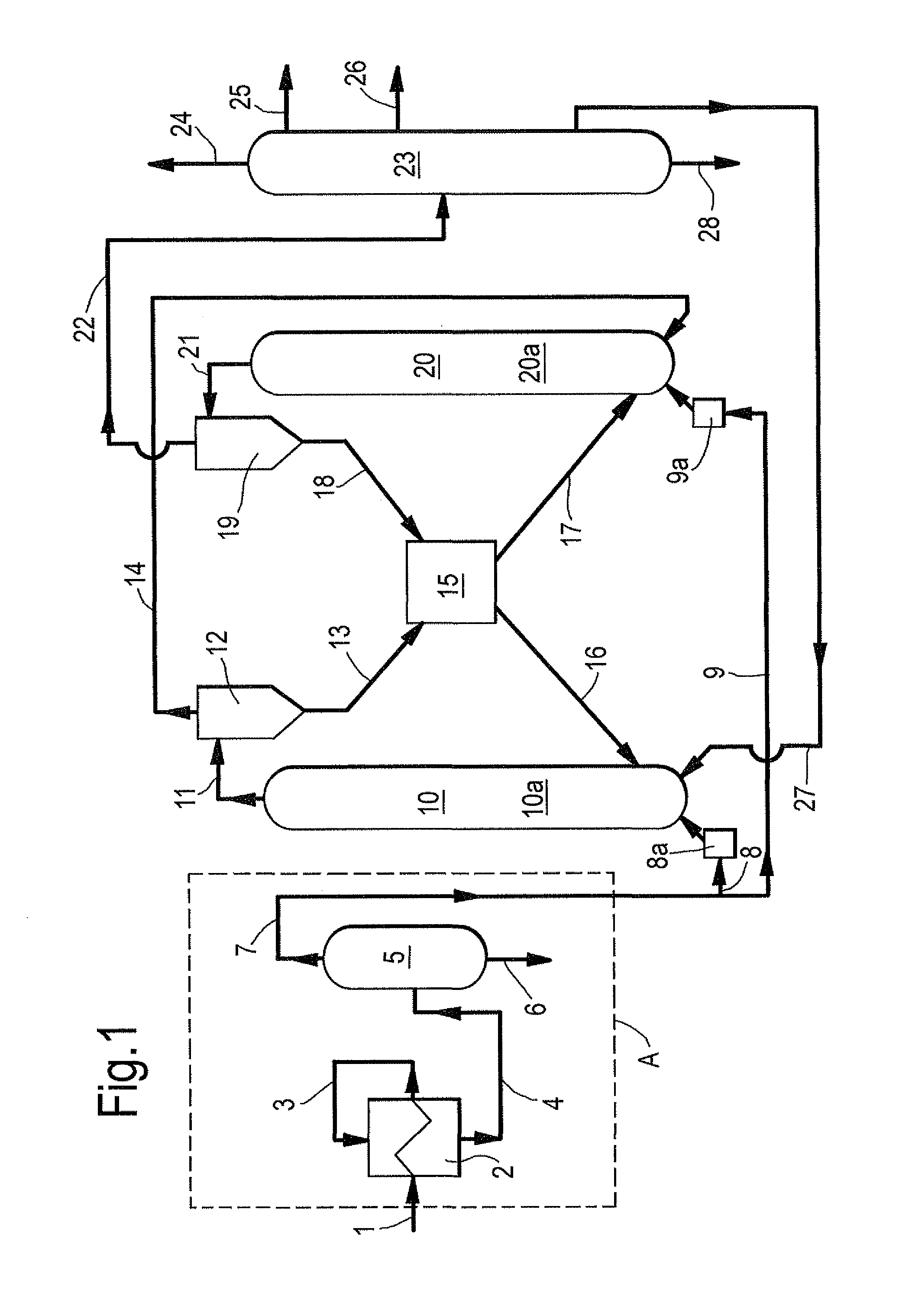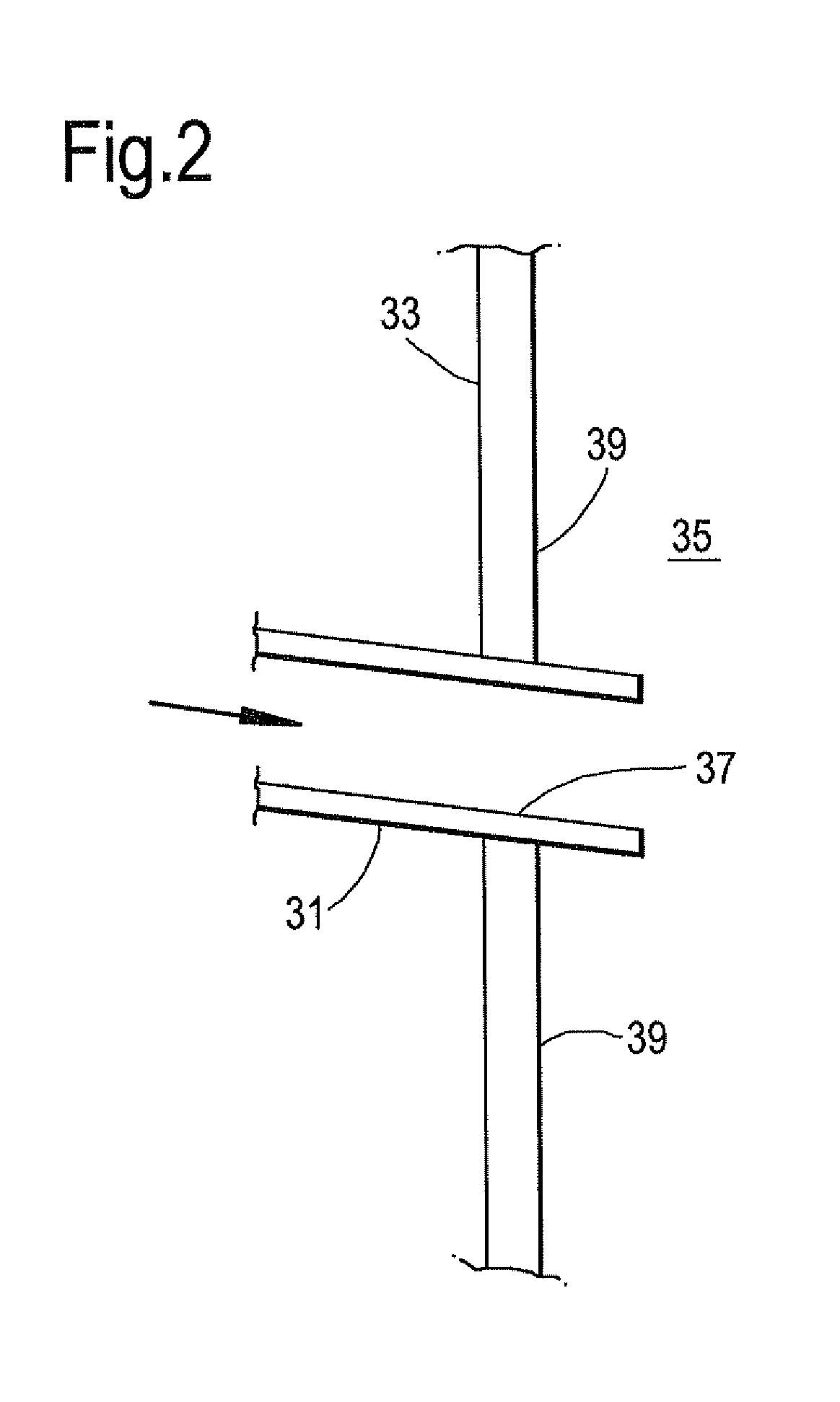Process and reactor system for the preparation of an olefinic product
a reactor system and olefinic technology, applied in chemical/physical/physico-chemical processes, organic chemistry, hydrocarbon oil treatment products, etc., can solve the problems of undesirable by-products, unsatisfactory by-products, and reduced product yield
- Summary
- Abstract
- Description
- Claims
- Application Information
AI Technical Summary
Benefits of technology
Problems solved by technology
Method used
Image
Examples
examples
[0107]Embodiments of the invention will now be described, by way of example only.
[0108]A variety of experiments were conducted to convert methanol to di-methyl ether (DME) in a flow through reactor having beds with various compounds which may be used as coatings. The experiments aimed to determine which compound would minimise side reactions, in particular, minimise methanol steam reforming (producing CO and H2).
Experimental
[0109]Materials were evaluated in a nanoflow reactor apparatus. Typically, 50 to 350 mg of material mixed with 350 mg of SiC and loaded into a 3.6 mm ID quartz reactor tube, depending on the required space velocity. A particle size fraction of 40-60 mesh (420-250 μm) was commonly used.
[0110]In the experiments a methanol feed (6.7 vol % in Argon) was used, at temperatures above 100° C., and a pressure of 1 bara. In a typical experiment the reactor was heated to the required reaction temperature under a flow of Argon, before passing the gas stream containing the de...
PUM
| Property | Measurement | Unit |
|---|---|---|
| temperature | aaaaa | aaaaa |
| temperature | aaaaa | aaaaa |
| thickness | aaaaa | aaaaa |
Abstract
Description
Claims
Application Information
 Login to View More
Login to View More - R&D
- Intellectual Property
- Life Sciences
- Materials
- Tech Scout
- Unparalleled Data Quality
- Higher Quality Content
- 60% Fewer Hallucinations
Browse by: Latest US Patents, China's latest patents, Technical Efficacy Thesaurus, Application Domain, Technology Topic, Popular Technical Reports.
© 2025 PatSnap. All rights reserved.Legal|Privacy policy|Modern Slavery Act Transparency Statement|Sitemap|About US| Contact US: help@patsnap.com


